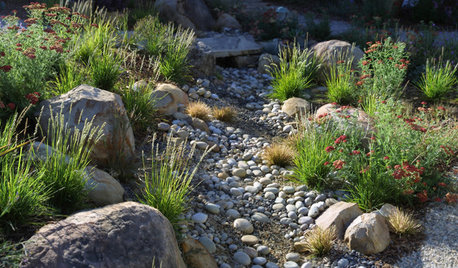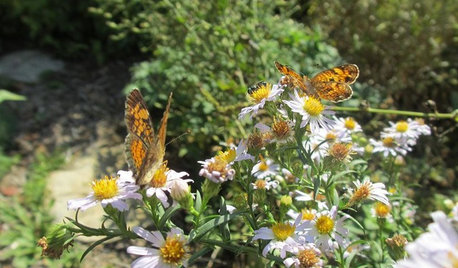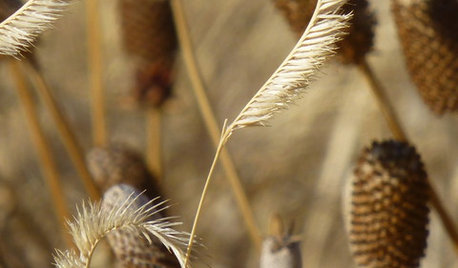Hello all!
I think Autumn is just an exciting time as Spring, because for me there is something new sprouting every day. First there was the Belladonnas and Japanese Windflowers, with their soft white flowers glowing in the afternoon sun. As the night temperatures drop to 4 or 5 degrees, other bulbous plants begin to wake up too. I have had a few flowers from Colchicum agrippinum already, they have the most unusual checkered blooms. But they are small compared to the enormous Colchicum byzantinum, which appeared for me in the last few days. Coming naked out of the bare ground, the tubes quickly lengthen before the petals, pink on the upper halves, spread out to embrace the Autumn sun. Each bulb produces a succession of pink goblets, and since I've only had two blooms so far, I can just imagine what they will look like in full bloom.
Familiar but not closely related to the Colchicums, is the group of Autumn-flowering crocus. Generally later flowering then Colchicum, if you plant them sharing the same soil you'll have a double display. Most of my Crocuses haven't woken up yet, but this morning I did notice a dark blue spike in one of my pots, which will become the bloom of European Crocus pulchellus. White within, blue without and with a light yellow throat you don't need to do any more colour co-ordinating then that!! The petals are tightly twisted up now, and will be fascinating to watch them uncurl.
Autumn is also when the genus Cyclamen start to wake up. You might have seen the over-sized florists cyclamen in garden centres this month, but I find them all too garish and bold for my liking. I prefer the smaller and subtler species of Cyclamen, and they have all begun to put up leaves and flowers in the shadey parts of my garden. Cyclamen persicum, the species from which all the florists cyclamen have originated, is dainty in its unadulterated form, and is usually the first to sprout for me and were very early this year. So far my pots have little mounds of patterned C. persicum leaves, and on close inspection you can see the tiny flower buds forming in the leaf axils. The wonderful thing about Cyclamen is, they are quite attractive whether or not they have flowers, for the leaves are wonderfully veined and marbled with green, silver, and pewter. I have one tuber of C. persicum which has a red rim on the egde of every leaf, it is a very slight colouring that often goes unnoticed. The leaves also make it more bearable to grow them from seed, in the few years it takes for the plant to grow to flowering size, you can get all excited about what the leaved are going to turn out like first.
Another common species in the genus is Cyclamen hederifolium. I saw these in bloom at the Tasmanian Botanic Gardens here in Hobart long before mine had flowers, forming a carpet of white and pink under some rhododendrons along a retaining wall next to a path. At first I thought it was quite odd-looking flowering without the leaves as they do, but it makes the genus even more interesting! My two hederifoliums flowered last week, one pink and one white. I don't know if I will be expecting any more flowers, because they are still small and it is my first year with them. From the pictures I have seen in various books and things, Cyclamen hederifolium has some of the most interesting leaves in the whole genus.
Cyclamen coum is a rather dumpy species of Cyclamen, with round little leaves and shorter wider petals that make the flowers look like mice ears. Strictly saying it is Spring-flowering, but gets its leaves in Autumn and Winter, with the odd flower through Winter, but really bursts into colour in Springtime. I have seen whole bulb pans filled with pink C. coum; the flowers being so densely packed one can hardly see the leaves between them! My specimens are much more modest, living in 6-inch terracotta pots situated on a low brick wall where they get dappled shade. I also have a few small seed-grown tubers, so I put them in little terracotta pots that I got from a $2 shop, they will look so cute when they leaf up!
My most precious Cyclamen are a less common specie, Cyclamen graecum. Unlike most in the genus, these need a moderate baking in summer to initiate good flowering. Cyclamen graecum have thick fleshy roots to store water to help them through this baking. In their natural habitat (mainland Greece, most of the Peloponnese, the Saronic Islands, the Sporades, the islands of the eastern Aegean, Crete, Rhodes, the south coast of Turkey, and part of the north of Cyprus) they thrive in both rocky outcrops and pine needle litter, and in altitudes up to 1200m above sea level. They are Autumn flowering also, but much later then C. hederifolium, towards the Winter side of Autumn.
While none of my Nerines look like they're going to flower this year, my Leucojum autumnale have, with their delicate white bells and red-tinged stems. They are much smaller then their Spring-flowering relatives, and also lack the green blotch on each petal segment which is so characteristic of the genus. They lack impact on their own however, and I can picture groups of them tucked in between tubers of Cyclamen coum and hederifolium in my future garden, this threesome looking lovely under tree ferns or deciduous trees.
And while Autumn means the garden is slowing down, that doesn't mean the gardener is slowing down! Bulbs have to go in, trees need to be pruned, soil rejuvinated, plants re-potted. It never ends for the life of a gardener, but one must not forget to sit back once in a while and admire his work, for it is the most satisfying feeling.
Happy Autumn,
Lauren
















eddie_ga_7a
Related Professionals
Arlington Landscape Architects & Landscape Designers · Marina Landscape Architects & Landscape Designers · Saint Louis Park Landscape Architects & Landscape Designers · Aurora Landscape Contractors · Jackson Landscape Contractors · Americus Landscape Contractors · Commack Landscape Contractors · Corona Landscape Contractors · Fort Payne Landscape Contractors · Pueblo West Landscape Contractors · Columbia Fence Contractors · Dundalk Fence Contractors · Leesburg Fence Contractors · San Leandro Fence Contractors · Ventura Fence Contractors